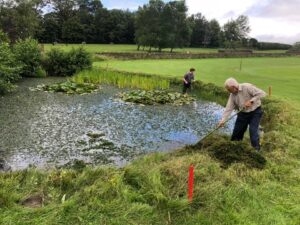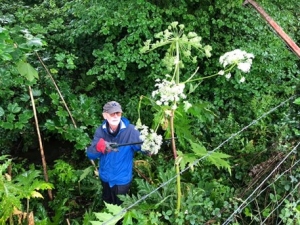Invasive Plants
Non-native invasive plant species are recognised as an increasing problem nationally and there are concerted attempts to control them (https://www.gov.uk/government/news/invasive-species-order-2019-consultation-opens).
Non-native species are usually defined as those species introduced by humans outside of their natural or native range. Invasive Non-native Species (INNS) are those which cause unwanted environmental or social impacts by spreading rapidly and becoming very abundant in the environment. It is not well understood why some species become invasive and others do not, but it is thought that non-native species are more likely to become invasive than native species.
In Addingham we have Japanese Knotweed, Giant Hogweed, Curly Waterweed, and Himalayan Balsam. Addingham Environment Group is working with landowners to tackle them all. The main issue though is Himalayan Balsam, which has spread extensively.
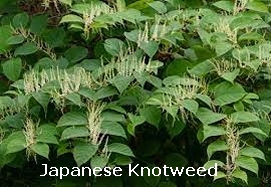
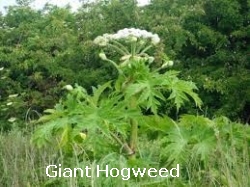

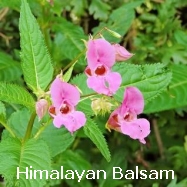
 Himalayan Balsam (Impatiens glandulifera), with its showy pink flowers may look attractive but it is a troublesome ‘invader’. Native to the foothills of the Himalayas, it was brought over by plant collectors in the 19th century. In recent years, in many parts of the country including Yorkshire, it has spread along riverbanks, becks and in wet woodlands, out-competing native plants. If left unchecked, it rapidly forms dense stands.
Himalayan Balsam (Impatiens glandulifera), with its showy pink flowers may look attractive but it is a troublesome ‘invader’. Native to the foothills of the Himalayas, it was brought over by plant collectors in the 19th century. In recent years, in many parts of the country including Yorkshire, it has spread along riverbanks, becks and in wet woodlands, out-competing native plants. If left unchecked, it rapidly forms dense stands.
As well as taking the place of native wildflowers, it also reduces the variety and abundance of invertebrates in the soil below and can draw pollinators away from native species. Himalayan Balsam (balsam) dies back in the autumn leaving bare ground which can cause bank erosion.
 It is listed in Schedule 9 of the Wildlife and Countryside Act in England and Wales as an invasive species, making it an offence to plant or otherwise cause it to grow in the wild.
It is listed in Schedule 9 of the Wildlife and Countryside Act in England and Wales as an invasive species, making it an offence to plant or otherwise cause it to grow in the wild.
Addingham Environment Group began its campaign to eradicate balsam from the Parish in the summer of 2017. Our work so far has focussed on the four main beck systems (Town Beck, Back Beck, Lumb Beck and Wine Beck) which rise on the moors above Addingham, and flow into the River Wharfe.
 In 2021, as well as continuing to work on the becks in the Parish, we also turned our attention to the River Wharfe.
In 2021, as well as continuing to work on the becks in the Parish, we also turned our attention to the River Wharfe.
While, Himalayan Balsam has been our focus, we have also helped landowners to identify and tackle other invasive plants. We found infestations of Giant Hogweed (Heracleum mantegazzianum) along two Lumb Beck tributaries and we are working with landowners to remove it. We are working alongside Bracken Ghyll Golf Club staff and volunteers, to help control and remove Curly Waterweed (Lagarosiphon major) from a pond on the golf course. We have also alerted a landowner to the presence of Japanese Knotweed (Reynoutria japonica) on their land.
